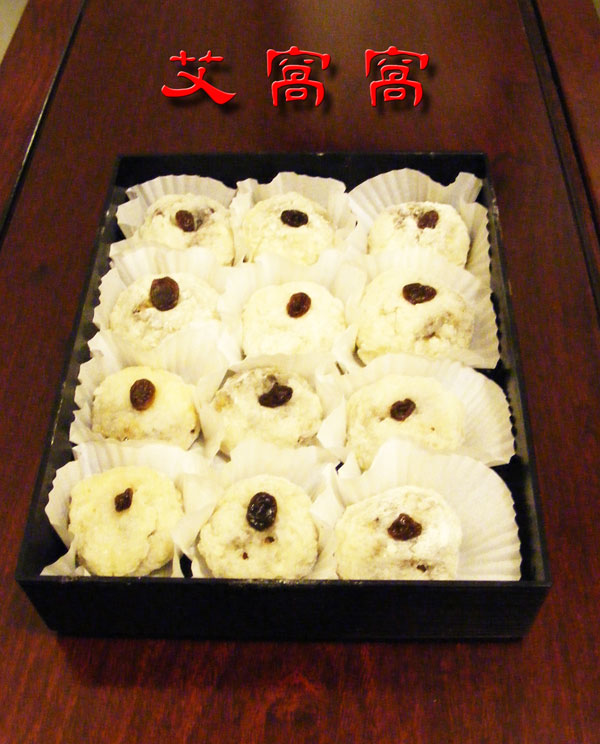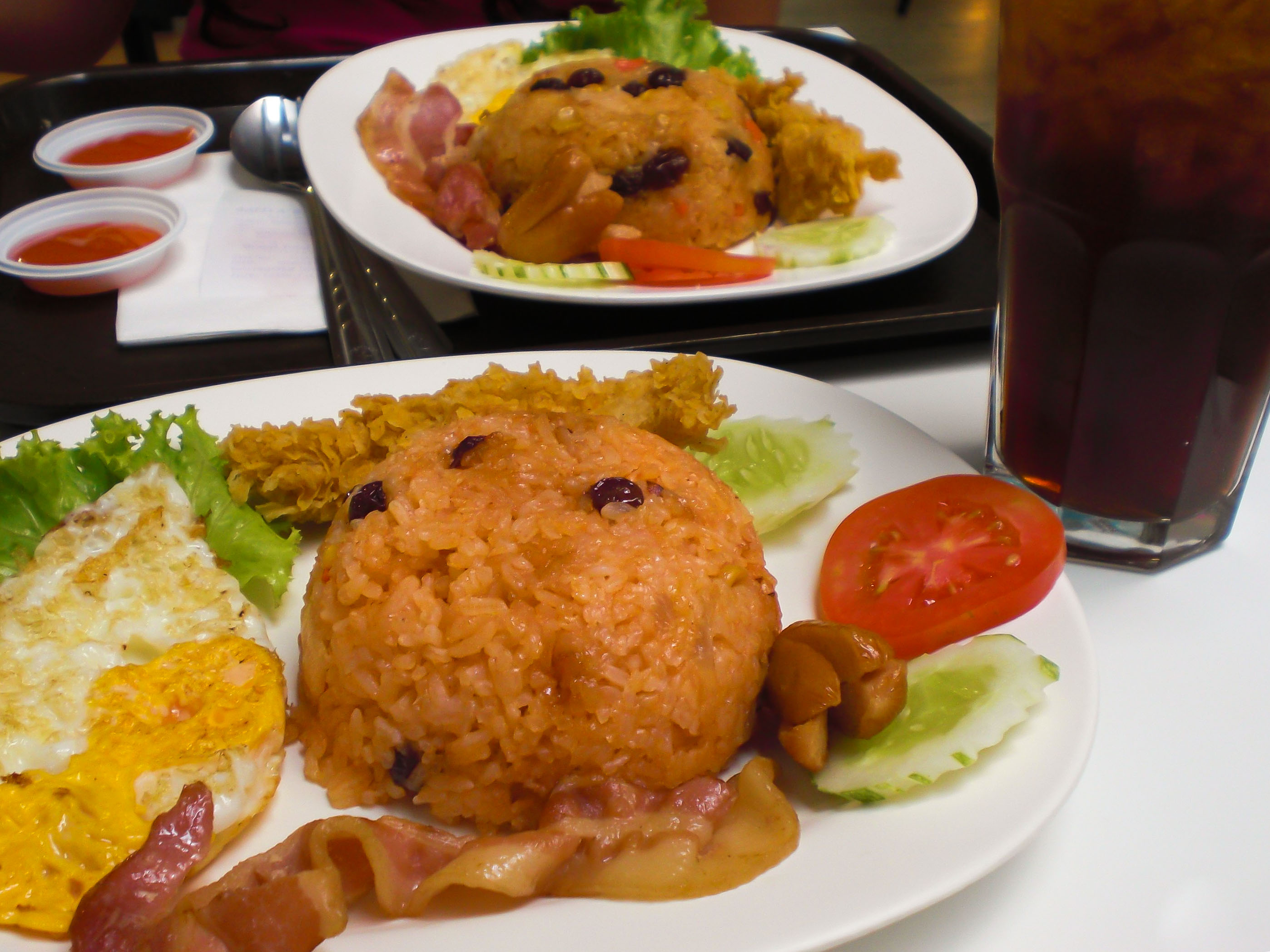|
Aiwowo
''Aiwowo'' () is a traditional dessert from Beijing, China. It is said that the Hui people invented these balls of sticky rice during the Qing dynasty for the Fragrant Concubine of the Qianlong Emperor in secret. Aiwowo has in fact been known from as early as the reign of the Wanli Emperor during the Ming dynasty. Aiwowo has traditionally been produced and sold in Hui restaurants, and is available from the Lunar New Year to late summer and early autumn. Aiwowo resemble snowballs in appearance. Their outer skin is prepared by cooking glutinous rice with flour and flattening the resulting mixture. The filling can be made using any ingredients at hand, including white sugar, sesame, apricots, melon seeds, plums and haws. See also * Beijing cuisine Beijing cuisine, also known as Jing cuisine, Mandarin cuisine and Peking cuisine and formerly as Beiping cuisine, is the local cuisine of Beijing, the national capital of China. Background As Beijing has been the capital ... [...More Info...] [...Related Items...] OR: [Wikipedia] [Google] [Baidu] |
Flour
Flour is a powder made by grinding raw grains, roots, beans, nuts, or seeds. Flours are used to make many different foods. Cereal flour, particularly wheat flour, is the main ingredient of bread, which is a staple food for many cultures. Corn flour has been important in Mesoamerican cuisine since ancient times and remains a staple in the Americas. Rye flour is a constituent of bread in central and northern Europe. Cereal flour consists either of the endosperm, germ, and bran together (whole-grain flour) or of the endosperm alone (refined flour). ''Meal'' is either differentiable from flour as having slightly coarser particle size (degree of comminution) or is synonymous with flour; the word is used both ways. For example, the word '' cornmeal'' often connotes a grittier texture whereas corn flour connotes fine powder, although there is no codified dividing line. The CDC has cautioned not to eat raw flour doughs or batters. Raw flour can contain bacteria like '' ... [...More Info...] [...Related Items...] OR: [Wikipedia] [Google] [Baidu] |
Chinese Desserts
Chinese desserts () are sweet foods and dishes that are served with tea, along with meals"Chinese Desserts." . Accessed June 2011. |
List Of Rice Dishes
This is a list of rice dishes from all over the world, arranged alphabetically. Rice is the seed of the monocot plants ''Oryza sativa'' (Asian rice) or ''Oryza glaberrima'' (African rice). As a cereal grain, it is the most widely consumed staple food for a large part of the world's human population, especially in Asia and the West Indies. It is the grain with the second-highest worldwide production, after maize (corn), according to data for 2010. Rice dishes Unsorted * Aiwowo * Bagoong fried rice * Buttered rice * Kanika * Mutabbaq samak * Sayadieh See also * Arabic rice – a pilaf preparation using rice and vermicelli noodles * List of fried rice dishes * List of rice beverages * List of rice varieties * List of tortilla-based dishes * Pakistani rice dishes References {{Lists of prepared foods * Rice dishes Rice dishes Rice dishes Rice dishes This is a list of rice dishes from all over the world, arranged alphabetically. Rice is the seed of the monocot plants ''Ory ... [...More Info...] [...Related Items...] OR: [Wikipedia] [Google] [Baidu] |
Beijing Cuisine
Beijing cuisine, also known as Jing cuisine, Mandarin cuisine and Peking cuisine and formerly as Beiping cuisine, is the local cuisine of Beijing, the national capital of China. Background As Beijing has been the capital of China for centuries, its cuisine is influenced by culinary traditions from all over China, but the style that has the greatest influence on Beijing cuisine is that of the eastern coastal province of Shandong.Wang, Juling, ''Famous Dishes of Famous Restaurant in Beijing'', Golden Shield Publishing House in Beijing, December, 2000, Xu, Chengbei, ''Ancient Beijing, Customs of the General Populace of Ancient Beijing'', Jiangsu Fine Arts Publishing House in Nanjing, September, 1999, Hua Mengyang and Zhang Hongjie, ''Lives of the residents of Ancient Beijing'', Shandong Pictorial Publishing House in Jinan, June, 2000, Du, Fuxiang and Guo, Yunhui, ''Famous Restaurants in China'', China Tourism Publishing House in Beijing, 1982 Beijing cuisine has itself, in turn, als ... [...More Info...] [...Related Items...] OR: [Wikipedia] [Google] [Baidu] |
Crataegus Pinnatifida
''Crataegus pinnatifida'', also known as mountain hawthorn, Chinese haw, Chinese hawthorn or Chinese hawberry, refers to a small to medium-sized tree, as well as the fruit of the tree. The fruit is bright red, in diameter. Use Culinary use In northern Chinese cuisine, ripe ''C. pinnatifida'' fruits are used in the desserts ''tanghulu'' and '' shanzhagao''. It is also used to make the traditional candies haw flakes and haw rolls, as well as candied fruit slices, jam, jelly, and wine. It is also traditionally used as a finishing ingredient in Cantonese sweet and sour sauce, although it has since been partially supplanted by ketchup. Traditional medicine In traditional Chinese medicine Traditional Chinese medicine (TCM) is an alternative medical practice drawn from traditional medicine in China. It has been described as "fraught with pseudoscience", with the majority of its treatments having no logical mechanism of acti ..., the dried fruits of ''C. pinnatifida'' ha ... [...More Info...] [...Related Items...] OR: [Wikipedia] [Google] [Baidu] |
Plums
A plum is a fruit of some species in ''Prunus'' subg. ''Prunus''''.'' Dried plums are called prunes. History Plums may have been one of the first fruits domesticated by humans. Three of the most abundantly cultivated species are not found in the wild, only around human settlements: ''Prunus domestica'' has been traced to East European and Caucasian mountains, while '' Prunus salicina'' and '' Prunus simonii'' originated in China. Plum remains have been found in Neolithic age archaeological sites along with olives, grapes and figs. According to Ken Albala, plums originated in Iran. They were brought to Britain from Asia. An article on plum tree cultivation in Andalusia (southern Spain) appears in Ibn al-'Awwam's 12th-century agricultural work, ''Book on Agriculture''. Etymology and names The name plum derived from Old English ''plume'' "plum, plum tree", borrowed from Germanic or Middle Dutch, derived from Latin ' and ultimately from Ancient Greek ''proumnon'', itself bel ... [...More Info...] [...Related Items...] OR: [Wikipedia] [Google] [Baidu] |
Melon Seeds
Egusi (Yoruba: '' ẹ̀gúsí,'' Igbo: ègwusi), also known as, agusi, ohue, Ikpan, Ikon, or agushi) is the name for the protein-rich seeds of certain cucurbitaceous plants (squash, melon, gourd), which, after being dried and ground, are used as a major ingredient in West African cuisine. Authorities disagree whether the word is used more properly for the seeds of the colocynth, those of a particular large-seeded variety of the watermelon, or generically for those of ''any'' cucurbitaceous plant. The characteristics and uses of all these seeds are broadly similar. Major egusi-growing nations include Nigeria, Burkina Faso, Togo, Ghana, Côte d'Ivoire, Benin, Mali, and Cameroon. Species from which egusi is derived include ''Cucumeropsis mannii'' and ''Citrullus lanatus''. Usage Egusi soup is a soup thickened with the seeds. Egusi soup is popular in West Africa, with considerable local variations. Besides the seeds, water, and oil, egusi soup typically contains leaf vegetab ... [...More Info...] [...Related Items...] OR: [Wikipedia] [Google] [Baidu] |
Apricots
An apricot (, ) is a fruit, or the tree that bears the fruit, of several species in the genus '' Prunus''. Usually, an apricot is from the species '' P. armeniaca'', but the fruits of the other species in ''Prunus'' sect. ''Armeniaca'' are also called apricots. Etymology ''Apricot'' first appeared in English in the 16th century as ''abrecock'' from the Middle French ''aubercot'' or later ''abricot'', from Spanish '' albaricoque'' and Catalan ''a(l)bercoc'', in turn from Arabic الْبَرْقُوق (al-barqūq, "the plums"), from Byzantine Greek βερικοκκίᾱ (berikokkíā, "apricot tree"), derived from late Greek ''πραικόκιον'' (''praikókion'', "apricot") from Latin '' ersica ("peach")praecocia'' (''praecoquus'', "early ripening"). Species Apricots are species belonging to ''Prunus'' sect. ''Armeniaca''. The taxonomic position of '' P. brigantina'' is disputed. It is grouped with plum species according to chloroplast DNA sequences, but more closel ... [...More Info...] [...Related Items...] OR: [Wikipedia] [Google] [Baidu] |
Sesame
Sesame ( or ; ''Sesamum indicum'') is a flowering plant in the genus ''Sesamum'', also called benne. Numerous wild relatives occur in Africa and a smaller number in India. It is widely naturalized in tropical regions around the world and is cultivated for its edible seeds, which grow in pods. World production in 2018 was , with Sudan, Myanmar, and India as the largest producers. Sesame seed is one of the oldest oilseed crops known, domesticated well over 3,000 years ago. ''Sesamum'' has many other species, most being wild and native to sub-Saharan Africa. ''S. indicum,'' the cultivated type, originated in India. It tolerates drought conditions well, growing where other crops fail. Sesame has one of the highest oil contents of any seed. With a rich, nutty flavor, it is a common ingredient in cuisines around the world. Like other foods, it can trigger allergic reactions in some people. Etymology The word "sesame" is from Latin ''sesamum'' and Greek σήσαμον : ''sēsamon' ... [...More Info...] [...Related Items...] OR: [Wikipedia] [Google] [Baidu] |
White Sugar
White sugar, also called table sugar, granulated sugar, or regular sugar, is a commonly used type of sugar, made either of beet sugar or cane sugar, which has undergone a refining process. Description The refining process completely removes the molasses to give the white sugar, sucrose. It has a purity higher than 99.7%. Its molecular formula is . White sugars produced from sugar cane and sugar beet are chemically indistinguishable: it is possible, however, to identify its origin through a carbon-13 analysis. White sugar (and some brown sugar) produced from sugar cane may be refined using bone char by a few sugar cane refiners. For this reason white sugar from sugar cane may not be vegan. Beet sugar has never been processed with bone char and is vegan. From a chemical and nutritional point of view, white sugar does not contain—in comparison to brown sugar—some minerals (such as calcium, potassium, iron and magnesium) present in small quantities in molasses. The only d ... [...More Info...] [...Related Items...] OR: [Wikipedia] [Google] [Baidu] |
Glutinous Rice
Glutinous rice ('' Oryza sativa var. glutinosa''; also called sticky rice, sweet rice or waxy rice) is a type of rice grown mainly in Southeast and East Asia, and the northeastern regions of South Asia, which has opaque grains, very low amylose content, and is especially sticky when cooked. It is widely consumed across Asia. It is called glutinous ( la, glūtinōsus) in the sense of being glue-like or sticky, and not in the sense of containing gluten (which it does not). While often called ''sticky rice'', it differs from non-glutinous strains of japonica rice which also become sticky to some degree when cooked. There are numerous cultivars of glutinous rice, which include ''japonica'', ''indica'' and ''tropical japonica'' strains. History In China, glutinous rice has been grown for at least 2,000 years. However, researchers believe that glutinous rice distribution appears to have been culturally influenced and closely associated with the early southward migration and dis ... [...More Info...] [...Related Items...] OR: [Wikipedia] [Google] [Baidu] |








.jpg)